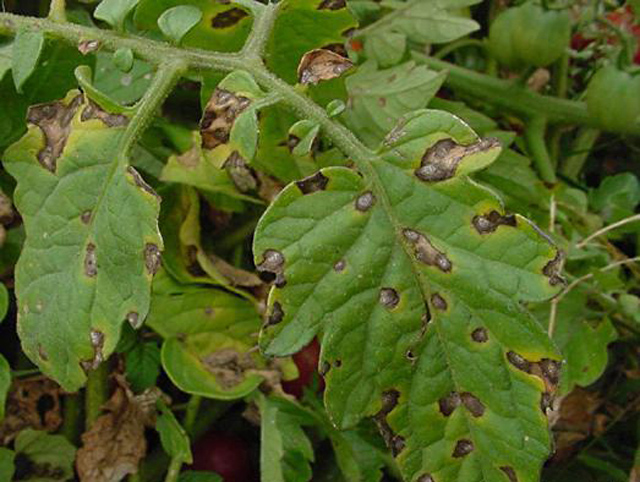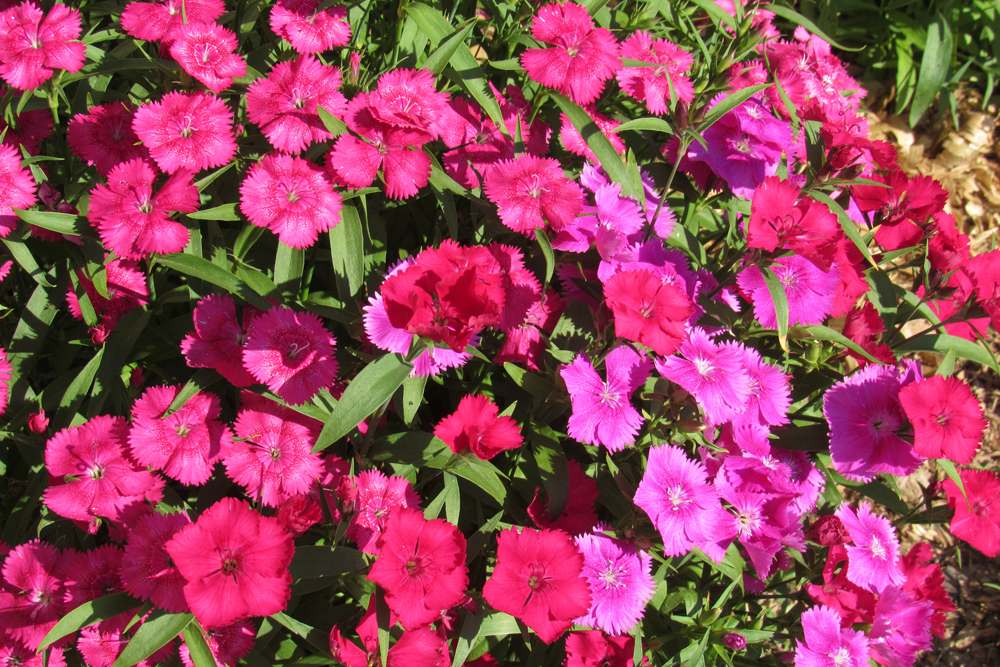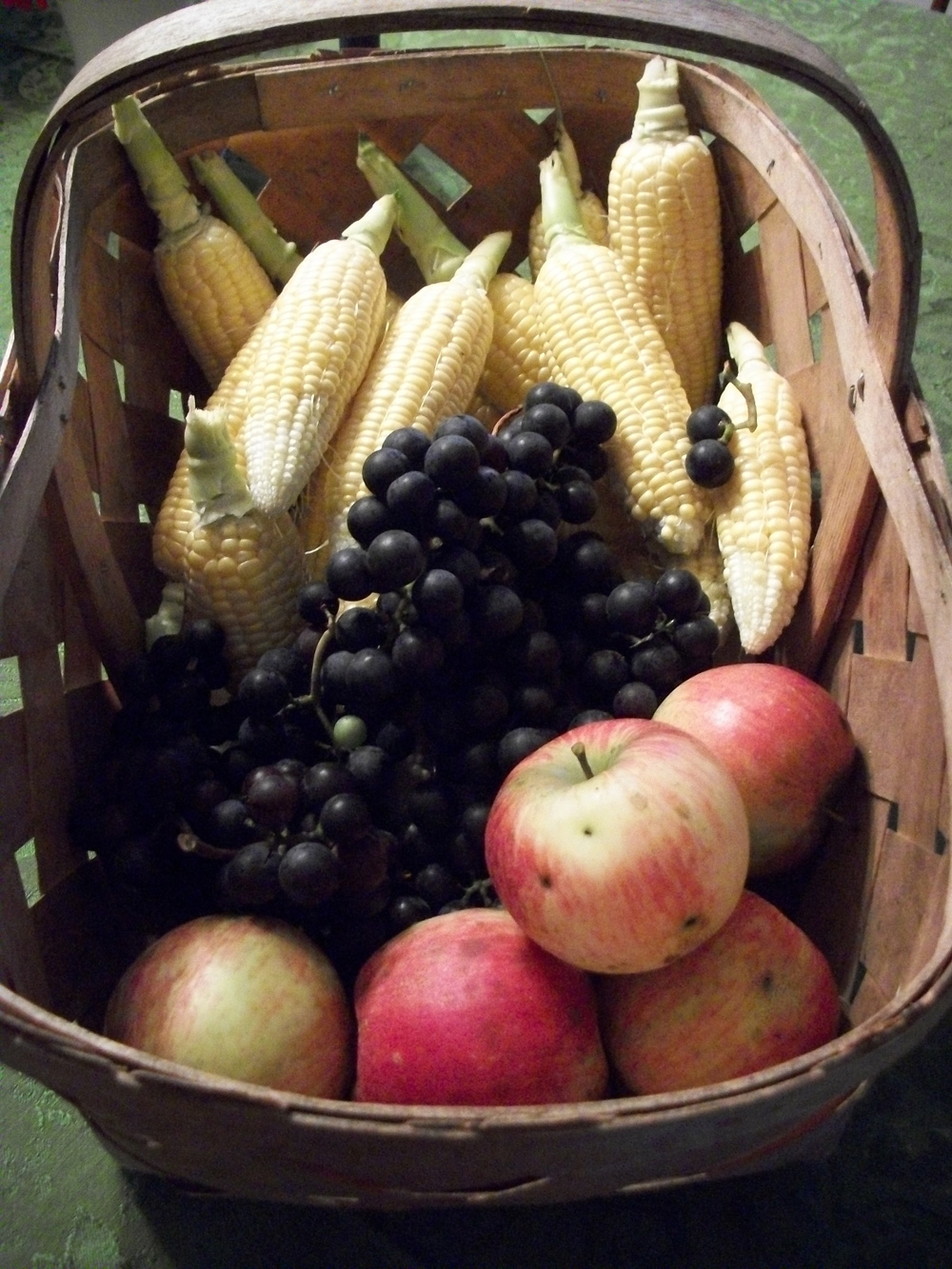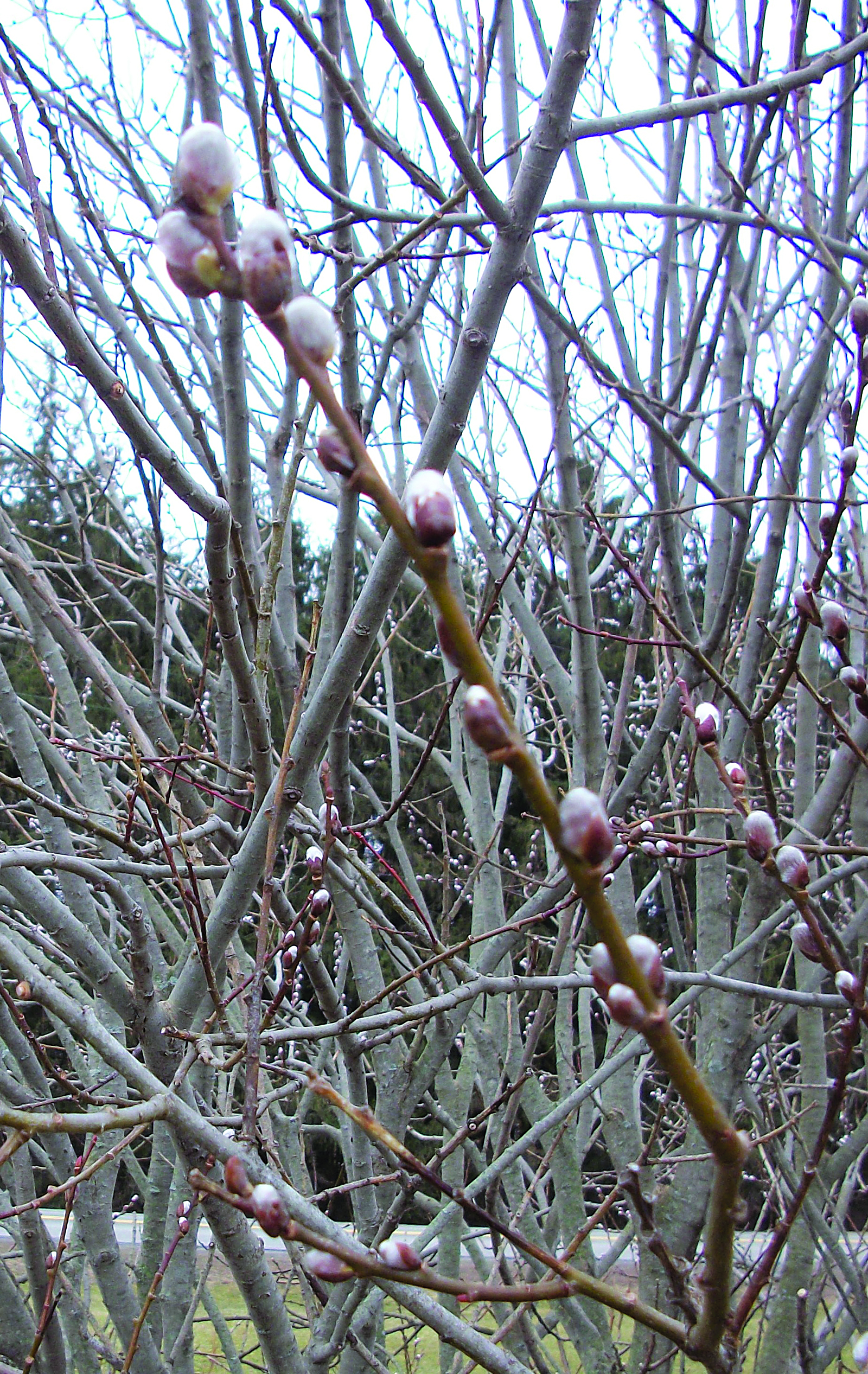Leaf spot disease in tomatoes

With the wet weather we’ve had this summer, you are probably noticing signs of fungal diseases in your garden. Tomatoes are susceptible to a variety of such diseases in the summer and one of those is Septoria leaf spot.
This fungal disease affects only the leaves of the plant, not the fruit. Typically the leaves closest to the ground are the first to be affected. They develop small, dark spots which can rapidly enlarge and have a tan or gray center. In the center of the spot, you may see small, black dots, which are the fruiting bodies of the fungus. If there are enough spots, the leaves turn yellow and then brown; the leaf will eventually wilt, dry up, and fall off.
Michigan State University Extension says the Septoria pathogen spreads easily via water splashing to the upper leaves, causing further defoliation.
Once Septoria leaf spot is evident, it can be controlled but not cured. It can become an issue with tomatoes year after year if tomatoes are always planted in the same garden spot. Wet and warm conditions cause the spores to exude from the Septoria fruiting bodies present on infected leaves. When the spores land on a healthy leaf, spotting can appear in five days if weather conditions are ideal.
Cultural techniques work well in controlling the fungus. The University of Minnesota Extension recommends pinching off leaves with leaf spots. Dispose of diseased foliage in plastic garbage bags and put them in the trash. You may remove one-third of the plant’s leaves to help prevent the spread of the fungus. Some gardeners routinely prune the lower leaves of tomato plants for this reason. Keep leaves dry by watering at the soil level, preferably early in the day.
Mulching the soil below tomato plants reduces the ability of diseases in the soil to splash onto the lower leaves. You can use landscape fabrics, straw, plastic mulch, or dried leaves. Staking tomatoes or using a trellis can help keep plants off the soil and also help with air circulation – which facilitates faster drying out of leaves after rainfall.
Don’t work in tomato plants when the leaves are wet. Save jobs like staking, pruning, and weeding for when plants are dry.
Crop rotation is another way to help control and even prevent fungal disease. Wait at least two years before planting tomatoes or peppers in the same location. Do not save seed from infected plants.
The University of Minnesota reminds gardeners that most home garden tomatoes do not need to be treated with fungicide for Septoria leaf spot. The plants can tolerate high levels of leaf loss from leaf spot diseases without affecting the number of tomatoes produced by the plant.
If you have recurring Septoria leaf spot infections year after year, however, you may want to consider using a fungicide, which must be applied before signs of disease occur. Michigan State University Extension recommends chlorothalonil, which can be found in several fungicide brands, and “Serenade,” which is an organic fungicide. Always follow label directions and remember, pesticide sprays cannot be applied more frequently than what is specified on the label.






